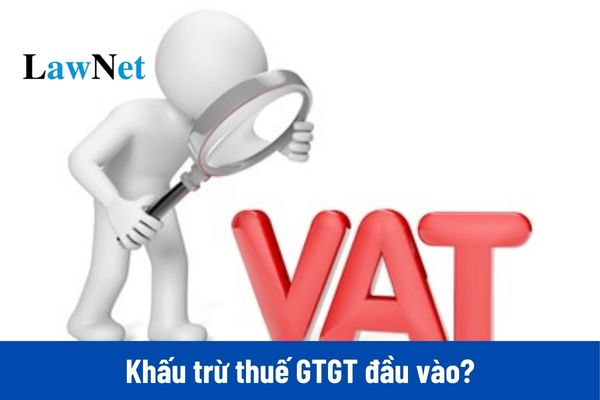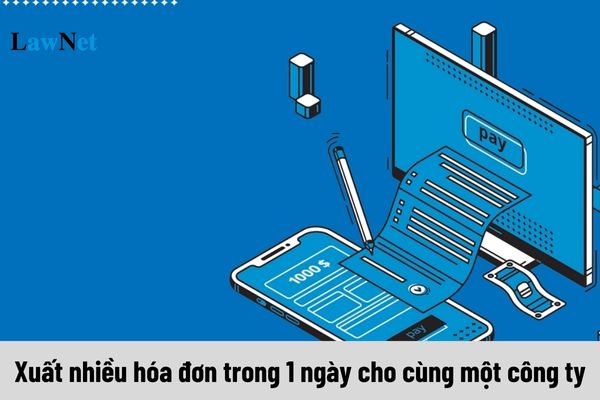What are cases where the input VAT must not be deducted in Vietnam?
What are cases where the input VAT must not be deducted in Vietnam?
Pursuant to Clause 15, Article 14 of Circular 219/2013/TT-BTC, which stipulates the cases in which a business establishment is not allowed to deduct input value-added tax (VAT), including:
- VAT invoices not compliant with the law, such as VAT invoices that do not list VAT (except for specific cases where VAT invoices list payment prices inclusive of VAT);
- Invoices that do not list, or incorrectly list criteria such as the name, address, tax code of the seller, making it impossible to identify the seller;
- Invoices that do not list, or incorrectly list criteria such as the name, address, tax code of the buyer, making it impossible to identify the buyer (except as guided in Clause 12, Article 14 of Circular 219/2013/TT-BTC);
- Counterfeit VAT invoices, altered invoices, or void invoices (without accompanying goods or services);
- Invoices that record values not matching the actual value of traded goods or services.

What are cases where the input VAT must not be deducted in Vietnam? (Image from the Internet)
What are the conditions for deducting input VAT in Vietnam?
According to Article 15 of Circular 219/2013/TT-BTC as amended by Clause 10, Article 1 of Circular 26/2015/TT-BTC, Article 1 of Circular 173/2016/TT-BTC stipulates conditions for deducting input VAT as follows:
- Having a legitimate VAT invoice for goods and services purchased or a document of payment of VAT in the import stage, or a document of VAT payment on behalf of foreign parties according to the Ministry of Finance's guidance for foreign organizations without legal status in Vietnam, and for foreign individuals conducting business or having income arising in Vietnam.
- Having non-cash payment documents for goods and services purchased (including imported goods) from twenty million VND and above, except in cases where the value of imported goods or services per instance is less than twenty million VND, goods or services purchased per invoice under twenty million VND including VAT, and in cases where a business establishment imports goods as gifts or presents from organizations or individuals abroad.
Additionally, non-cash payment documents include bank transfer documents and other non-cash payment documents guided as follows:
- Bank transfer documents are understood as having documents that prove the transfer of money from the buyer's account to the seller's account opened at payment service organizations in accordance with current legal regulations such as checks, payment orders or written transfer orders, collection authorizations, collection mandates, bank cards, credit cards, phone sim (e-wallet), and other payment forms as stipulated.
- Other non-cash payment cases for deducting input VAT include:
+ In case of goods or services purchased via offset payment between the value of purchased goods and services and the value of sold goods and services, borrowing goods where this payment method is specifically stipulated in the contract, there must be a reconciliation record and confirmation between the two parties regarding the offset payment between purchased goods and services and sold goods and services, borrowing goods. In case of offset via a third party, there must be a three-party (3) offset record as the basis for tax deduction.
+ In case of goods or services purchased via debt offset methods such as borrowing money, debt offset through a third party where this payment method is specifically stipulated in the contract, there must be a loan contract in written form established beforehand, and a transfer document from the lender's account to the borrower's account for the loan in money, including the case of offsetting the value of purchased goods and services with the amount supported by the seller to the buyer or on behalf of the buyer.
+ In case of goods and services purchased being paid by delegation through a third party via bank payment, the delegated payment or payment for a third party as instructed by the seller must be stipulated specifically in the contract in written form, and the third party must be a legal entity or individual operating according to legal regulations.
+ In case after conducting the above payment forms, the remaining value is paid in cash of twenty million VND or more, only tax deduction with bank payment documents is permitted.
+ In case goods and services purchased are paid via bank to a third party’s account opened at the State Treasury to implement coercive measures by collecting money and property by other organizations or individuals (according to a decision of a competent state agency), input VAT deduction is also allowed.
- In case of purchasing goods and services from a supplier valued under twenty million VND but making multiple purchases on the same day with a total value from twenty million VND or more, tax deduction is only allowed if there is bank payment documentation.
What is the method of deducting input VAT in Vietnam?
Based on Clause 1, Article 10 of the Law on Value-Added Tax 2008, as amended by Clause 4, Article 1 of the Law on Value-Added Tax Amendments 2013, the method of deducting value-added tax is stipulated as follows:
Deduction Method of VAT
- The VAT deduction method is specified as follows:
a) VAT payable calculated by the deduction method equals the output VAT minus the deductible input VAT;
b) The output VAT equals the total VAT of goods and services sold as recorded on the VAT invoice.
The VAT of goods and services sold as recorded on the VAT invoice is determined by multiplying the taxable price of the goods and services sold by the corresponding VAT rate of those goods and services.
In cases where payment price documents include VAT, the output VAT is defined as the payment price minus the taxable price as defined under point k, clause 1, Article 7 of this Law;
c) Deductible input VAT is the total VAT recorded on the VAT invoice for purchased goods and services, tax payment documents for imported goods which meet the conditions stipulated in Article 12 of this Law.
...
Thus, the method of deducting input VAT is regulated by the total VAT recorded on the VAT invoice for purchased goods and services, tax payment documents for imported goods, which meet the conditions stipulated in Article 12 of the Law on Value-Added Tax 2008.



- What are specialized measures during processing of tax refund applications in Vietnam?
- Do tax authorities of Vietnam have the right to publish tax-related regulatory violations on mass media?
- Is the amount received under public service housing policies considered taxable personal income in Vietnam?
- Are invoices issued for internally used goods in Vietnam?
- What principles and basis are used to determine the maximum road user charge in Vietnam?
- Is healthcare service providers for the elderly subject to VAT in Vietnam?
- Is the therapeutic service provides for persons with disabilities subject to VAT in Vietnam?
- What is the currency unit used in tax accounting in Vietnam?
- Which enterprise groups will the General Department of Taxation of Vietnam focus on inspecting and auditing in 2025?
- What are guidelines on online submission of unemployment benefits application in Vietnam in 2025? Are unemployment benefits subject to personal income tax?

